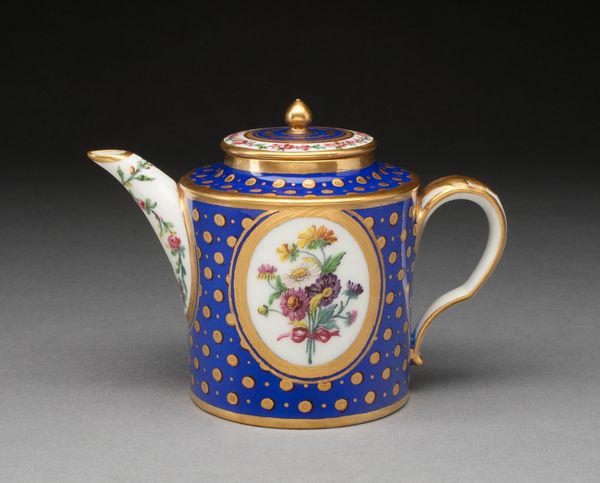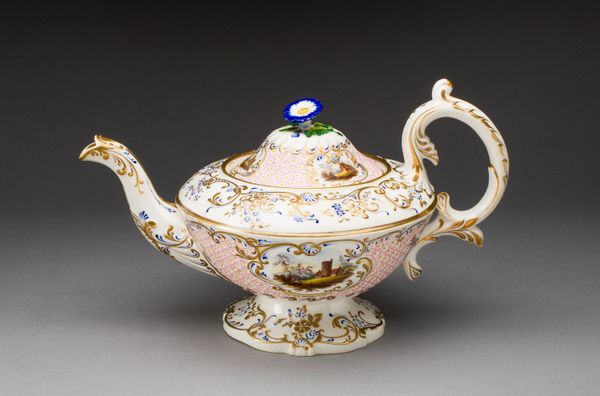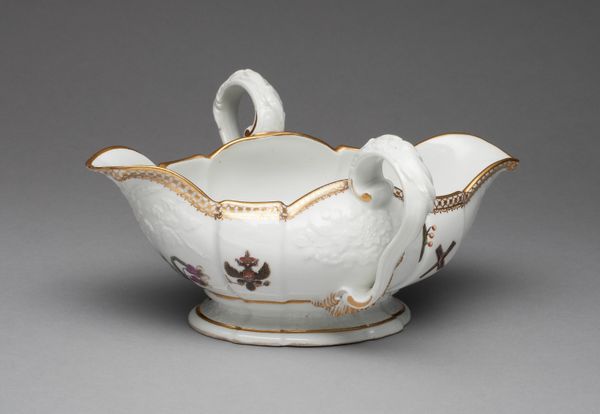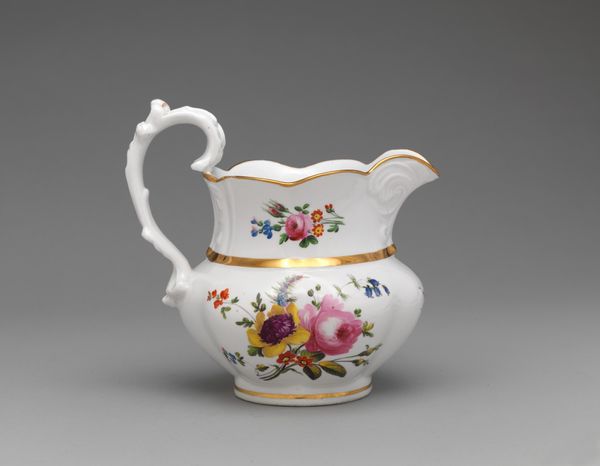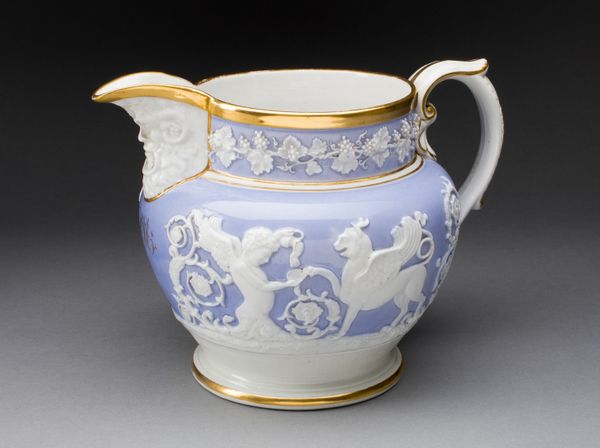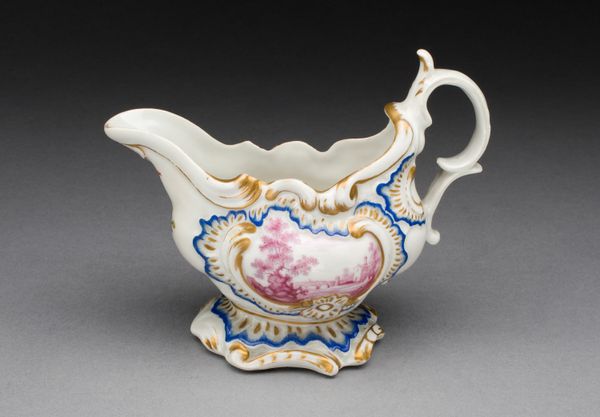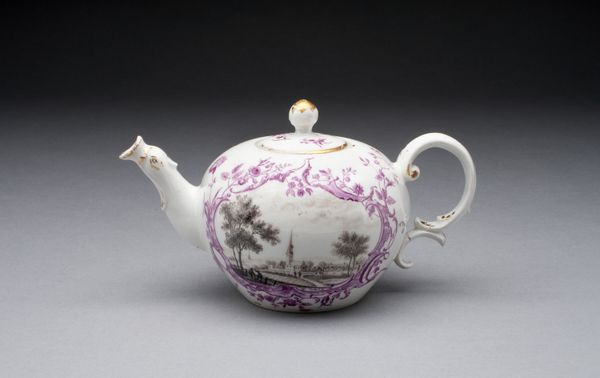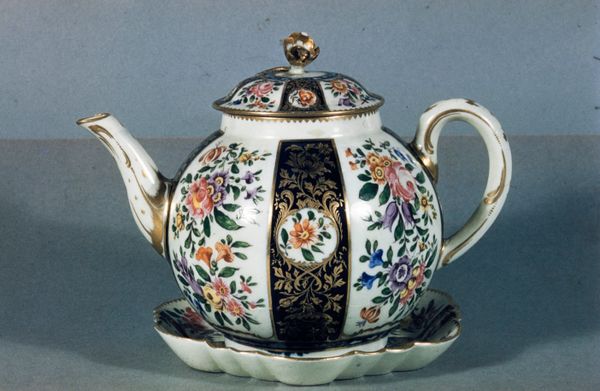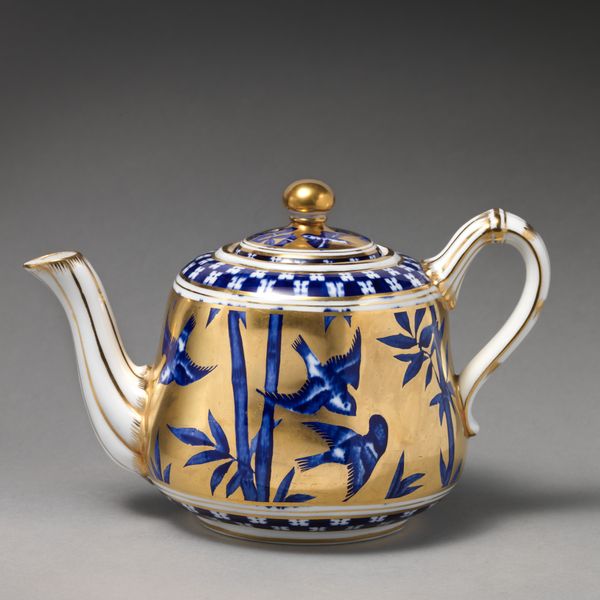
ceramic, porcelain
#
ceramic
#
porcelain
#
decorative-art
#
rococo
Dimensions: 12.7 × 16.8 × 8.9 cm (5 × 6 5/8 × 3 1/2 in.)
Copyright: Public Domain
This porcelain teapot was made by the Manufacture nationale de Sèvres in France. Though undated, the factory’s style and practices would suggest it likely dates to the late 18th century. Sèvres was a royal porcelain factory, enjoying the patronage of Louis XV and later Louis XVI. Its products catered to the tastes of the aristocracy and reflected the prevailing artistic trends of the time. Neoclassical motifs, delicate ornamentation, and refined craftsmanship were highly prized. Tea services like this one played a role in social rituals and displays of wealth. The cherubic figure might be seen in the context of the growing fashion for pastoral themes, popular among the elite seeking an idealized vision of rural life. But we should remember that this idealized vision masked the realities of economic inequality and social unrest brewing beneath the surface of French society. To understand this teapot fully, historians might consult factory records, period inventories, and social histories to illuminate the object's original context and significance.
Comments
No comments
Be the first to comment and join the conversation on the ultimate creative platform.
